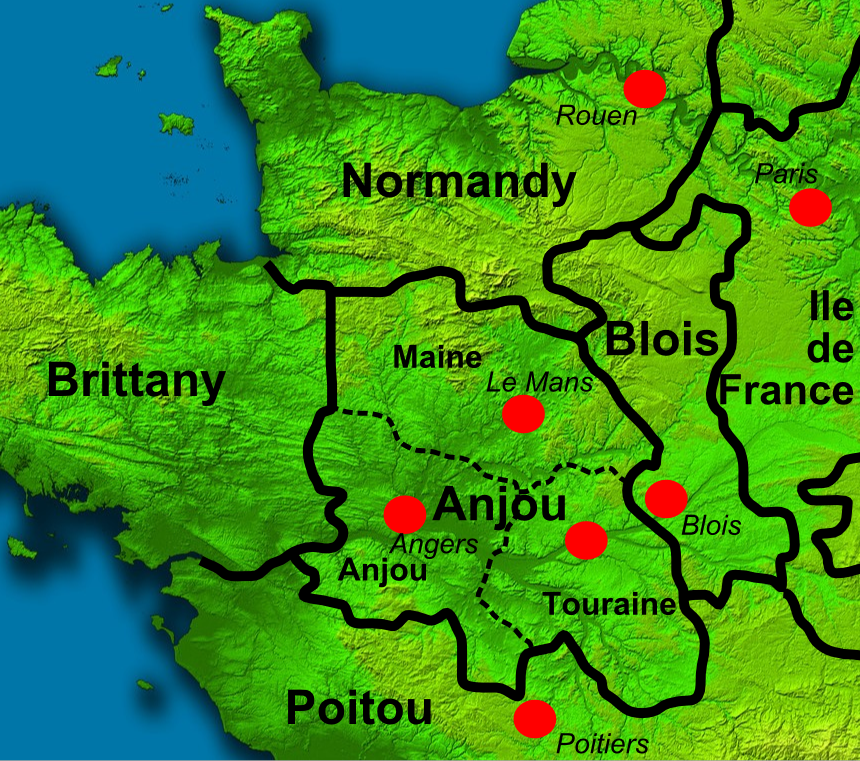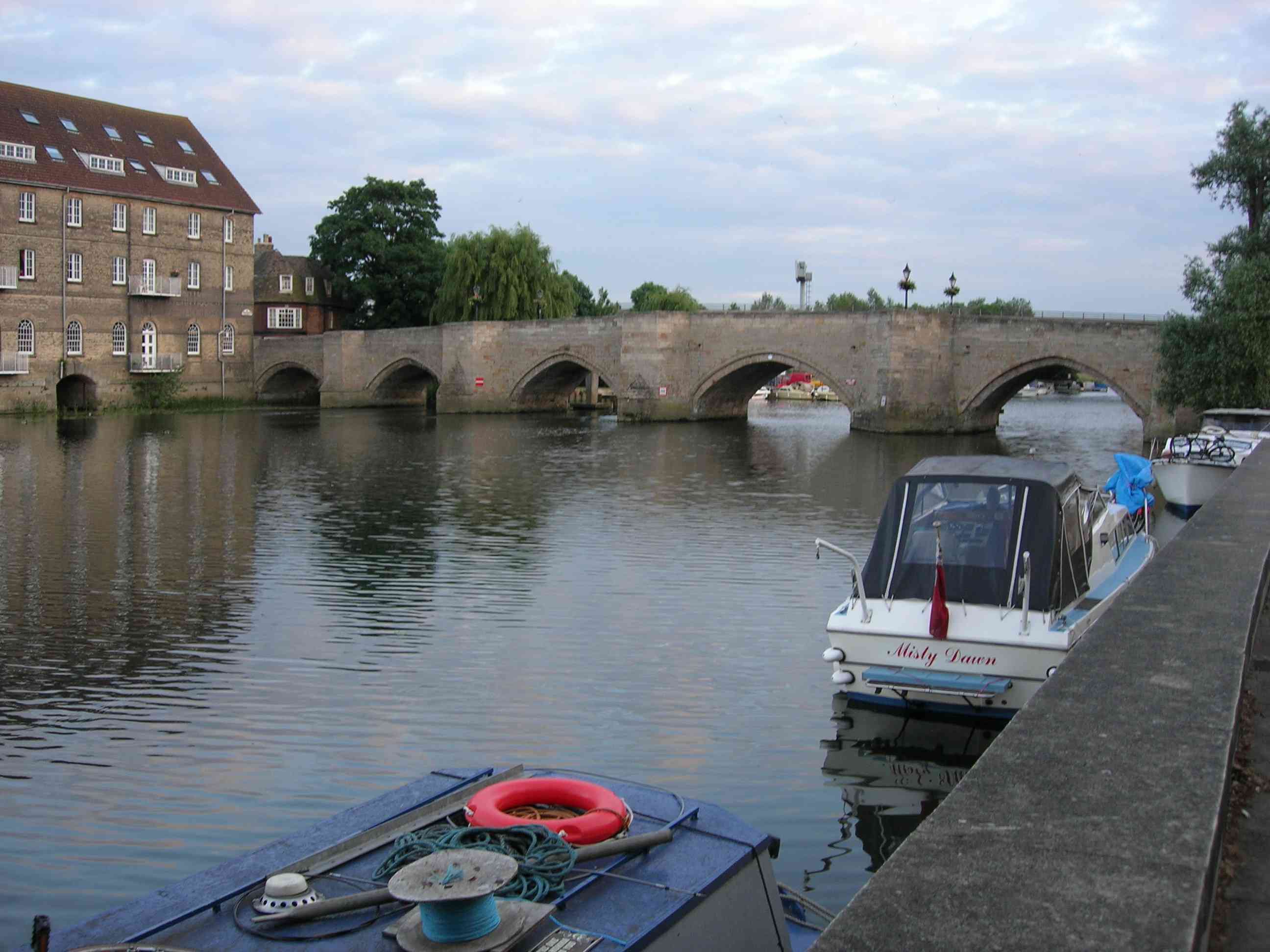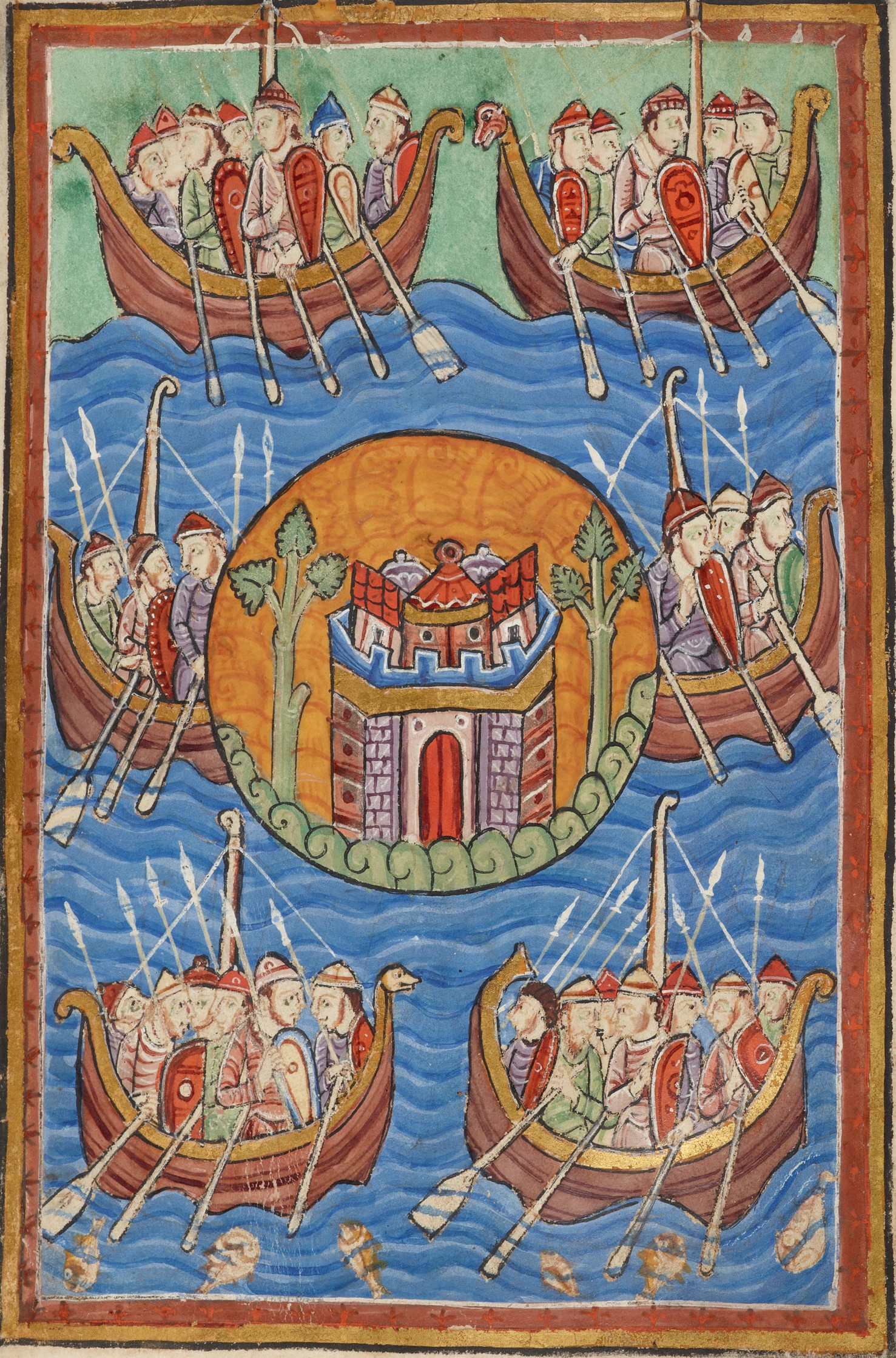|
Thurleigh Castle
Thurleigh Castle, also known as Bury Hills, was a medieval castle in the civil parish of Thurleigh, in the county of Bedfordshire, England. Details The site is a Scheduled Monument, protected by law and described as ''Bury Hill Camp: a motte-and-bailey castle with three fishponds''. The motte is notable in that it has a top platform on two levels, and the bailey is also of unusual form and is exceptionally large. The motte is an earthen mound, oval in plan, measuring 60m long by up to 40m wide at its base and between 40m long by 20m wide at the top. The higher level is at the north-eastern end and is thought to have held the stronghold. To the south of the motte is the bailey which is irregular in shape and measures 200m by 270m. Excavations in the 1970s found few remains of the Norman castle, but finds indicated that the site had been occupied in the Iron-Age, Roman and Saxon periods. It has been postulated that the motte and bailey was the easternmost of a line of defensive ... [...More Info...] [...Related Items...] OR: [Wikipedia] [Google] [Baidu] |
Thurleigh
Thurleigh is a village and civil parish in the Borough of Bedford, north Bedfordshire, England, situated around north of Bedford town centre. History Excavations have shown evidence the locality was occupied in the Iron-Age, Roman and Saxon periods. In Domesday of 1086 the Middle English orthography as to both modern 'th' digraph sounds was often in different forms particularly as to this county — the place is ''LaLega''. By 1372 it is ''Thyrleye''. In 1813, ''Thurleigh'', or ''Thurley'', is recorded as being in the Hundred of Willey and the Deanery of Eaton. The scribes were particularly ecclesiastical for the county as ''Lega'' is a very Latin-esque form of ''leigh''. The latter is a very common word, rarely used today for meadow or clearing (lea) almost certainly an Anglo-Saxon word perhaps preceded by the definite article, as early written in unrelated prose ''þǣre lēa''. Being in the Danelaw however a link to Thor cannot be ruled out. There was a church her ... [...More Info...] [...Related Items...] OR: [Wikipedia] [Google] [Baidu] |
Roman Britain
Roman Britain was the territory that became the Roman province of ''Britannia'' after the Roman conquest of Britain, consisting of a large part of the island of Great Britain. The occupation lasted from AD 43 to AD 410. Julius Caesar invaded Britain in 55 and 54 BC as part of his Gallic Wars. According to Caesar, the Britons had been overrun or culturally assimilated by the Belgae during the British Iron Age and had been aiding Caesar's enemies. The Belgae were the only Celtic tribe to cross the sea into Britain, for to all other Celtic tribes this land was unknown. He received tribute, installed the friendly king Mandubracius over the Trinovantes, and returned to Gaul. Planned invasions under Augustus were called off in 34, 27, and 25 BC. In 40 AD, Caligula assembled 200,000 men at the Channel on the continent, only to have them gather seashells () according to Suetonius, perhaps as a symbolic gesture to proclaim Caligula's victory over th ... [...More Info...] [...Related Items...] OR: [Wikipedia] [Google] [Baidu] |
List Of Castles In England
This list of castles in England is not a list of every building and site that has "castle" as part of its name, nor does it list only buildings that conform to a strict definition of a castle as a medieval fortified residence. It is not a list of every castle ever built in England, many of which have vanished without trace, but is primarily a list of buildings and remains that have survived. In almost every case the buildings that survive are either ruined, or have been altered over the centuries. For several reasons, whether a given site is that of a medieval castle has not been taken to be a sufficient criterion for determining whether or not that site should be included in the list. Castles that have vanished or whose remains are barely visible are not listed, except for some important or well-known buildings and sites. Fortifications from before the medieval period are not listed, nor are architectural follies. In other respects it is difficult to identify clear and consi ... [...More Info...] [...Related Items...] OR: [Wikipedia] [Google] [Baidu] |
Castles In Great Britain And Ireland
Castles have played an important military, economic and social role in Great Britain and Ireland since their introduction following the Norman invasion of England in 1066. Although a small number of castles had been built in England in the 1050s, the Normans began to build motte and bailey and ringwork castles in large numbers to control their newly occupied territories in England and the Welsh Marches. During the 12th century the Normans began to build more castles in stone – with characteristic square keep – that played both military and political roles. Royal castles were used to control key towns and the economically important forests, while baronial castles were used by the Norman lords to control their widespread estates. David I invited Anglo-Norman lords into Scotland in the early 12th century to help him colonise and control areas of his kingdom such as Galloway; the new lords brought castle technologies with them and wooden castles began to be established over the ... [...More Info...] [...Related Items...] OR: [Wikipedia] [Google] [Baidu] |
Earthworks (archaeology)
In archaeology, earthworks are artificial changes in land level, typically made from piles of artificially placed or sculpted rocks and soil. Earthworks can themselves be archaeological features, or they can show features beneath the surface. Types There are two broad categories of archaeological earthwork: positive features where earth is built up above the previous ground level, and negative features which are cut into the landscape. Beyond this, earthworks of interest to archaeologists include hill forts, henges, mounds, platform mounds, effigy mounds, enclosure (archaeology), enclosures, long barrows, tumulus, tumuli, ridge and furrow, motte-and-bailey castle, mottes, round barrows, and other tombs. * Hill forts, a type of fort made out of mostly earth and other natural materials including sand, straw, and water, were built as early as the late Stone Age and were built more frequently during the Bronze Age and Iron Age as a means of protection. See also Oppidum. * Henge eart ... [...More Info...] [...Related Items...] OR: [Wikipedia] [Google] [Baidu] |
Stephen, King Of England
Stephen (1092 or 1096 – 25 October 1154), often referred to as Stephen of Blois, was King of England from 22 December 1135 to his death in 1154. He was Count of Boulogne ''jure uxoris'' from 1125 until 1147 and Duke of Normandy from 1135 until 1144. His reign was marked by the Anarchy, a civil war with his cousin and rival, the Empress Matilda, whose son, Henry II, succeeded Stephen as the first of the Angevin kings of England. Stephen was born in the County of Blois in central France as the fourth son of Stephen-Henry, Count of Blois, and Adela, daughter of William the Conqueror. His father died as a crusader while Stephen was still young, and he was brought up by his mother. Placed into the court of his uncle Henry I of England, Stephen rose in prominence and was granted extensive lands. He married Matilda of Boulogne, inheriting additional estates in Kent and Boulogne that made the couple one of the wealthiest in England. Stephen narrowly escaped drowning with ... [...More Info...] [...Related Items...] OR: [Wikipedia] [Google] [Baidu] |
Odell, Bedfordshire
Odell is a small village and civil parish in the Borough of Bedford, north Bedfordshire, England, approximately north-west of Bedford town centre, near the villages of Harrold, Felmersham, Sharnbrook and Carlton. History Roman and Saxon period Evidence of occupation includes the remains of a farm dating from just before the Roman invasion. It comprised two round timber buildings inside a fenced enclosure, and two cremation pits. After the conquest its survival and prosperity may have been linked to there being a Roman presence at Irchester. The evidence is that the farm was abandoned in the 4th century and remained unoccupied until the 6th or 7th century. After this it no doubt experienced a chequered history owing to attacks by Danish Vikings. In the early 11th century the area where the present village lies was part of five or more '' hides'' that were under Levenot, a thane of King Edward the Confessor, who owned much land. At that time the village was already known ... [...More Info...] [...Related Items...] OR: [Wikipedia] [Google] [Baidu] |
River Great Ouse
The River Great Ouse ( ) is a river in England, the longest of several British rivers called "Ouse". From Syresham in Northamptonshire, the Great Ouse flows through Buckinghamshire, Bedfordshire, Cambridgeshire and Norfolk to drain into the Wash and the North Sea near Kings Lynn. Authorities disagree both on the river's source and its length, with one quoting and another . Mostly flowing north and east, it is the fifth longest river in the United Kingdom. The Great Ouse has been historically important for commercial navigation, and for draining the low-lying region through which it flows; its best-known tributary is the Cam, which runs through Cambridge. Its lower course passes through drained wetlands and fens and has been extensively modified, or channelised, to relieve flooding and provide a better route for barge traffic. The unmodified river would have changed course regularly after floods. The name ''Ouse'' is from the Celtic or pre-Celtic *''Udso-s'', and probably ... [...More Info...] [...Related Items...] OR: [Wikipedia] [Google] [Baidu] |
Anglo-Saxon Settlement Of Britain
The settlement of Great Britain by Germanic peoples from continental Europe led to the development of an Anglo-Saxons, Anglo-Saxon cultural identity and a shared Germanic language—Old English—whose closest known relative is Old Frisian, spoken on the other side of the North Sea. The first Germanic speakers to settle Britain permanently are likely to have been soldiers recruited by the Roman administration in the 4th century AD, or even earlier. In the early 5th century, during the end of Roman rule in Britain and the breakdown of the Roman economy, larger numbers arrived, and their impact upon local culture and politics increased. There is Historiography of the Anglo-Saxon settlement of Britain, ongoing debate about the scale, timing and nature of the Anglo-Saxon settlements and also about what happened to the existing populations of the regions where the migrants settled. The available evidence includes a small number of medieval texts which emphasize Saxons, Saxon settle ... [...More Info...] [...Related Items...] OR: [Wikipedia] [Google] [Baidu] |
Iron-Age
The Iron Age () is the final epoch of the three historical Metal Ages, after the Chalcolithic and Bronze Age. It has also been considered as the final age of the three-age division starting with prehistory (before recorded history) and progressing to protohistory (before written history). In this usage, it is preceded by the Stone Age (subdivided into the Paleolithic, Mesolithic and Neolithic) and Bronze Age. These concepts originated for describing Iron Age Europe and the ancient Near East. In the archaeology of the Americas, a five-period system is conventionally used instead; indigenous cultures there did not develop an iron economy in the pre-Columbian era, though some did work copper and bronze. Indigenous metalworking arrived in Australia with European contact. Although meteoric iron has been used for millennia in many regions, the beginning of the Iron Age is defined locally around the world by archaeological convention when the production of smelted iron (especially s ... [...More Info...] [...Related Items...] OR: [Wikipedia] [Google] [Baidu] |
Bedfordshire
Bedfordshire (; abbreviated ''Beds'') is a Ceremonial County, ceremonial county in the East of England. It is bordered by Northamptonshire to the north, Cambridgeshire to the north-east, Hertfordshire to the south and the south-east, and Buckinghamshire to the west. The largest settlement is Luton (225,262), and Bedford is the county town. The county has an area of and had a population of 704,736 at the 2021 census. ''plus'' ''plus'' Its other towns include Leighton Buzzard, Dunstable, Biggleswade, Houghton Regis, and Flitwick. Much of the county is rural. For Local government in England, local government purposes, Bedfordshire comprises three Unitary authorities of England, unitary authority areas: Borough of Bedford, Bedford, Central Bedfordshire, and Luton. The county's highest point is on Dunstable Downs in the Chilterns. History The first recorded use of the name in 1011 was "Bedanfordscir", meaning the shire or county of Bedford, which itself means "Beda's ford ... [...More Info...] [...Related Items...] OR: [Wikipedia] [Google] [Baidu] |
Anglo-Normans
The Anglo-Normans (, ) were the medieval ruling class in the Kingdom of England following the Norman Conquest. They were primarily a combination of Normans, Bretons, Flemings, French people, Frenchmen, Anglo-Saxons and Celtic Britons. After the conquest the victorious Normans formed a ruling class in England, distinct from (although intermarrying with) the native Anglo-Saxon and Celtic populations. Over time, their language evolved from the continental Old Norman to the distinct Anglo-Norman language. Anglo-Normans quickly established control over all of England, as well as Norman invasion of Wales, parts of Wales (the Cambro-Normans, Welsh-Normans). After 1130, parts of southern and eastern Scotland came under Anglo-Norman rule (the Scoto-Norman, Scots-Normans), in return for their support of David I of Scotland#Government and feudalism, David I's conquest. The Anglo-Norman invasion of Ireland from 1169 saw Anglo-Normans and Cambro-Normans conquer swaths of Ireland, becomi ... [...More Info...] [...Related Items...] OR: [Wikipedia] [Google] [Baidu] |







